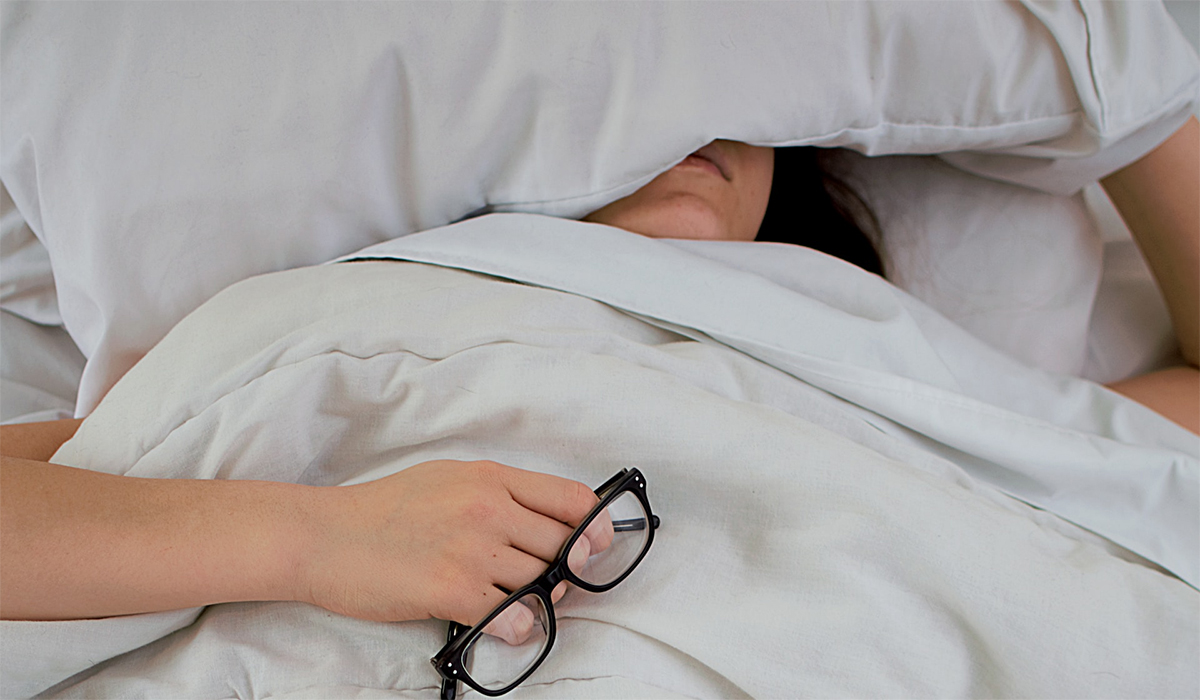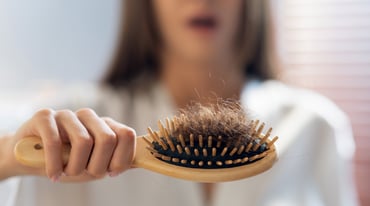Sleep Apnea Causes and Treatments – Solve Your Problem Naturally
People with obstructive sleep apnea have severe daytime fatigue and sleepiness. They often fall asleep while watching TV or driving – and they may have work-related accidents.
They usually develop high blood pressure and heart disease, and they are normally at greater risk of diabetes and nerve system conditions like Lou Gehrig’s disease.
Sleep apnea is a prevalent sleep disorder that affects a significant portion of the population.
According to recent sleep statistics, it is estimated that approximately 50 to 70 million people in The US have a sleep disorder, 25 million adults in the United States alone suffer from obstructive sleep apnea, with many cases going undiagnosed or untreated.
It is crucial for individuals experiencing symptoms of sleep apnea to seek a proper diagnosis and explore the available medical treatments to improve their sleep quality and overall well-being.
Obstructive Sleep Apnea
People with OSA have a hard time getting enough restful sleep, which can lead to serious problems. They might have heart damage and a higher risk for high blood pressure or type 2 diabetes. They also can have accidents, work or social problems, and feel tired all day.
Obstructive sleep apnea occurs when the throat becomes partly or completely blocked during sleep, causing breathing to stop briefly. This can happen hundreds of times a night and last for 10 seconds or more.
During these brief pauses, the brain doesn’t get the oxygen it needs to function. The person often snores or makes choking sounds and wakes up feeling tired.
The muscles that support the back of the throat and the tongue relax too much, closing or narrowing the airway. This can happen when the body is at rest or during sleep but is more common when sleeping on one’s back.
Your doctor can diagnose obstructive sleep apnea by asking about your symptoms, doing a physical exam and looking at your mouth, and by ordering a lab test.
They might also ask about your weight, how you sleep, and whether anyone who lives with you has noticed any snoring or gasping. They usually recommend a sleep study, which involves spending the night in a lab to track your breathing and other activities.
Central Sleep Apnea
Central sleep apnea happens when your brain stops sending signals to your breathing muscles, which then stop working while you’re asleep. It’s less common than obstructive sleep apnea, but it can still cause serious health problems.
It usually affects older adults, but it can happen in young children, too. It’s often caused by a disease that damages the lower part of your brainstem, which controls breathing. But it can also be caused by severe obesity, heart disease, Parkinson’s disease, stroke, diabetes, and some medications, including opioids.
If you have central sleep apnea, you might wake up feeling short of breath or like you’re choking. You might also have a pattern of sleeping in unusual positions or having trouble staying awake during the day.
Your spouse or bed partner might notice pauses in your breathing while you’re sleeping. Other symptoms can include irritability, depression or anxiety, and poor concentration.
A doctor may diagnose CSA by doing a physical exam and asking about your medical history. They might refer you to a sleep specialist, who will do an overnight sleep study that counts the number of times you stop breathing and records how severe the apnea is.
They might recommend changing your medication, treating any underlying illness, or using devices that deliver pressurized air to keep the airway open while you sleep, such as CPAP.
Treatments
People with moderate or severe obstructive sleep apnea need treatment to prevent low blood oxygen levels (hypoxemia) and high carbon dioxide concentrations in the blood (hypercapnia).
Treatment options, aside from using CPAP machines, include:
- losing weight
- stopping smoking
- sleeping on an elevated or reclining bed
- treating nasal allergies or sinus infections
- avoiding alcohol before going to bed
- using a mouthpiece
- taking certain medications
To diagnose sleep apnea, your doctor will ask about your symptoms and health history, including whether you have a family history of the condition.
They may also perform a physical exam and look for anything that might make the upper airway narrower, such as enlarged tonsils or a pulled-back jaw. In people with central sleep apnea, the healthcare provider will look for abnormalities in how the brain normally controls breathing.
They may ask for an overnight sleep study, called a polysomnogram. This test will monitor your heart rate, blood pressure, breathing, and brain waves as you sleep. The results will help your healthcare provider decide on the best treatment for you.
Other diagnostic tests may include a chest x-ray, an electrocardiogram, or a CT scan.
Symptoms of central sleep apnea are less common, but include sudden, jerking movements in the arms and legs as you breathe, which can appear to be choking or gasping; depression, trouble concentrating or hyperactivity; memory problems and headaches; numbness or tingling in your limbs or face; and a heart rhythm disturbance known as atrial fibrillation.
How to Solve Sleep Apnea Naturally
Exercise, such as running or swimming, can help reduce the severity of sleep apnea. Humidifiers can help open up airways, decrease congestion, and encourage easier breathing.
Consider adding lavender, peppermint, and eucalyptus oil for added benefits.
1. Exercise
Obstructive sleep apnea is caused by throat muscles and soft tissue, including the adenoids (areas of tissue high in the back of the throat that, in kids, help trap germs) relaxing too much during sleep and blocking the airway.
It usually involves loud snoring, though not everyone who snores has sleep apnea.
People with sleep apnea experience pauses in breathing several times an hour and struggle to get enough oxygen. It can lead to low energy levels, high blood pressure, and memory problems.
That is why exercise has been shown to improve the symptoms of obstructive sleep apnea, and a regular workout routine can help prevent it from getting worse.
A simple cardiovascular and stretching regimen can make a big difference. Weight loss programs also help because being overweight can exacerbate sleep apnea, as can alcohol and sleeping pills, which reduce muscle tone and block the flow of oxygen.
2. Honey
We all know that honey soothes a sore throat, and its anti-inflammatory properties help reduce swelling in the throat. It also acts as a natural lubricant for the throat, which can reduce snoring and make it easier to breathe.
Just add a teaspoon of honey to a glass of warm water before bed. Make sure you’re using raw honey, as processed honey often has a higher sugar content and can irritate the throat.
You can also try consuming two to three cloves of garlic every day. Garlic is a natural sedative, which can help prevent sleep apnea.
It can also reduce snoring and improve your concentration during the day, which can help you work more productively at the office.
3. Humidifiers
Sleep apnea is one of the most serious sleep disturbances, and it can cause a number of problems for you and your family. It can lead to a lack of quality sleep, which in turn leads to other health issues and even relationship problems.
There are many things you can do to help with your snoring and sleep apnea. One of these is to use a humidifier. Humidifiers can help you get a better night’s sleep by adding moisture to the air in your bedroom.
This is especially important during the winter when cold air and heating can dry out your nasal passages and skin.
Humidifiers can also loosen congestion by moistening the cells lining your nasal passage. The mucus can then be easily expelled when you cough or blow your nose. This is another reason why humidifiers are often recommended for people with snoring and sleep apnea.
Some CPAP machines come with a built-in humidifier, and you can also purchase a humidifier attachment for your CPAP machine.
4. Diet
In obstructive sleep apnea, something blocks your airway. This can be your tongue, tonsils, or uvula (the little piece of flesh hanging down in the back of your throat). It might also be fatty tissue around your throat or your neck.
People with obstructive sleep apnea often snore and have trouble staying awake or getting a good night’s rest.
Obstructive sleep apnea can cause heart disease and high blood pressure. It can also increase your risk of stroke and diabetes.
Diet can make your sleep apnea more manageable, but it won’t cure it. It’s important to combine a healthy diet with regular exercise and sleep apnea treatment like CPAP or oral appliances.
A diet rich in fruits, vegetables, low-fat dairy, lean proteins, and healthful fats can help you control your weight and reduce the inflammation that can contribute to sleep apnea.
Anti-inflammatory foods include garlic, ginger, turmeric, and omega-3 fatty acids. Avoid fried foods and sugary sodas. Opt for water or unsweetened iced tea and coffee.
Takeaway
While medical treatments are effective, there are also natural approaches that can be considered to manage sleep apnea symptoms.
Regular exercises, such as cardiovascular workouts and stretching, has been shown to improve OSA symptoms and prevent its progression. Honey, with its anti-inflammatory properties, can help reduce throat swelling and snoring. Humidifiers can add moisture to the air and alleviate nasal congestion, enhancing sleep quality.
Adopting a healthy diet rich in fruits, vegetables, lean proteins, and anti-inflammatory foods can help control weight and reduce inflammation associated with sleep apnea.
It is important for individuals experiencing symptoms of sleep apnea to consult with a healthcare professional for a proper diagnosis and appropriate treatment plan. With proper management, sleep apnea can be effectively addressed, improving sleep quality, overall health, and quality of life.





